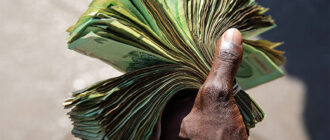Seen
This is the only sense that gives most details for our stories. Our words become the eyes of our readers, giving us a blank canvas on which to paint a picture to tell our story. From the sight of a common fear, like a spider silently crawling along the floor to the sight of a shadow on the stairs … a sight is our greatest source of terrible inspiration and description. When describing the sight of something terrible, there is a huge resource at the writer’s disposal, as we can use our other senses to add glorious, bloody detail to our descriptions. Here is an example of how all our senses can be used to describe a simple scene:
The apple was bright green, its skin polished and shiny as it lay in the orchard. (view). The smell was fresh, as if the fruit had just been picked from the tree (smell). She took it from the bowl, with her fingers around the firm smooth skin (touch) as she lifted it to her lips. The apple crackled loudly (are) while her teeth cut the skin into the sharp, juicy flesh (correct). As the fresh juice flowed down her throat, she noticed a small black spot moving slowly in the creamy flesh. A closer inspection showed she hadn’t just bitten the apple – she had bitten through a thick, juicy worm.
I am
Do you remember when you were a little kid, and your parents put you to bed? Maybe there was no night light, and the TV room was at the other end of the house …
You are lying in your bed. All alone. Desperately waiting for your eyes to get used to the darkness, you hear it – a low scratching noise – and it seems to come from under the bed. It only takes a moment before it stops. You wonder if you hear things, and you’re so desperate that the darkness brightens that you forget to blink. The blackness seems to swirl around you, covering you in a thick, black mist through which no light can penetrate. Suddenly it is again, only this time the scraping seems closer. And louder. It seems to last a little longer this time. So you hold your breath, because that darkness doesn’t seem to rise. You have lost your sense of sight, so without breathing, you hope to hear the sound more clearly, and identify its location …
The above description depends on the complete absence of the sense of sight. This is where fear comes in and can play an important descriptive role – in this case blind fear. To compensate for vision loss, the auditory sensation is sharper, so the writer can introduce other horrible thoughts and impressions. Where does the sound come from? How close is it? Will I be able to feel it if it decides to climb on the bed? When will my eyes get used to the darkness? Should I start panicking now? If I get up, will it jump on me?
Touch
This sense evokes a description of things we will most likely try to never touch, such as slime, frogs, and warty skin. All of these things are perfect for the horror / scary genre, but writers can also take the more ordinary touch phobias and use those items terribly. Some people can’t stand touching velvet, while others are afraid to touch paper. Still others find their skin crawling when they encounter cotton wool …
Opening the wooden box in the hotel bathroom, she retreated in terror. Nestling quietly at the bottom of the box, white and shiny, was a set of cotton wall balls. She stepped back, collapsing on the side of the bathroom. The mere thought of feeling those soft fibers creak as the ball pressed itself against her skin was enough to induce a goose. She wrapped her arms around a subconscious effort to protect her body from the fear she had had all her life. Just thinking about cotton balls made her skin crawl. She sighed quietly, remembering the silent noise they made when pressed; a noise that seemed to pass directly through her skin. Through her panic she wondered if she would remember to pack her facial sponges …
Descriptions of this particular sense can be enhanced by the use of physical reactions to sensing certain items; a goose, stepping away from the source of horror, collapsing in fear, subconscious defense (hugging the body) and screaming (moaning). All of these reactions add to the reader’s imagination, while adding to the image your words “paint”.
Smell
Bad smells in the horror / scary genre usually mean that something bad is about to happen or has already happened. The smell of rotting or burning flesh is probably the most common description applicable to this genus, and the description of the smell can also be used to indicate how death occurred. Bad home odors range from a two-week pizza cooling in the fridge to potatoes burning in a pot on the stove. Adjectives include: foul-smelling, foul-smelling, fetal, foul-smelling, rank, rotten, and harmful.
As she gave the last touches to the client’s hair, a pungent odor suddenly attacked her nostrils. It was a smell she hated and feared because it was a smell so terrible that the memory remained burned in the subconscious forever. She froze as the sharp stench filled the air, attacking her nostrils and her throat with its malignant taste. A moment later her hall was filled with gasps and terrible cries. She turned to the three ladies sitting under the dryers. Mrs. Hamilton and Edgar managed to get out from under their dryers, but poor Mrs. Smith could not move. One of the pins of her rollers obviously caught in the dryer, and set her hair on fire. Smoke flowed from the top of the machine, which started. Putting her hand over her mouth and nose to try to get rid of the foul odor, she began to turn to Mrs. Smith, who was screaming as flames flashed from the dryer … “
Right
Most, if not all, have an aversion to certain foods. We don’t like to eat it and its taste gets sick. Perhaps the mere thought of tasting it is enough to provoke some terrible thoughts and feelings.
The candlelight caught the drawings on the wine glass, casting a dark purple glow on the table. He raised the glass to his lips, the rich musky taste of cabernet sauvignon still drifting over his taste buds. At the first sip of the wine he almost suffocated. Obviously something was wrong with this new bottle of wine, because the liquid in his mouth had a bitter, sour taste. Although the consequence was the same as the previous glass, there was a sour taste he could not identify … although it seemed vaguely known. He swirled the liquid around in his mouth before swallowing it. It seemed to sting his tongue and burn the roof of his mouth, and when he swallowed the sharp liquid, his throat tingled. Suppressing the cough, he reached for the glass of water beside his plate and drank. As the cool water cleared the pungent taste of his palate, his hostess lifted the bottle he used to fill his wine glass … and poured balsamic vinegar over her salad plate.
Writers have a range of adjectives at their disposal when describing the terror of tasting unpleasant foods. These include: pungent, sour, pungent, bitter, fetid, foul-smelling, rotten, decaying, rancid, foul-smelling, stale, and bad.
Real life can be much more fascinating than fiction, and using our senses in our writing proves this truth. So the next time you sit down in front of your keyboard, touch those five senses, and see how they can color your words!






